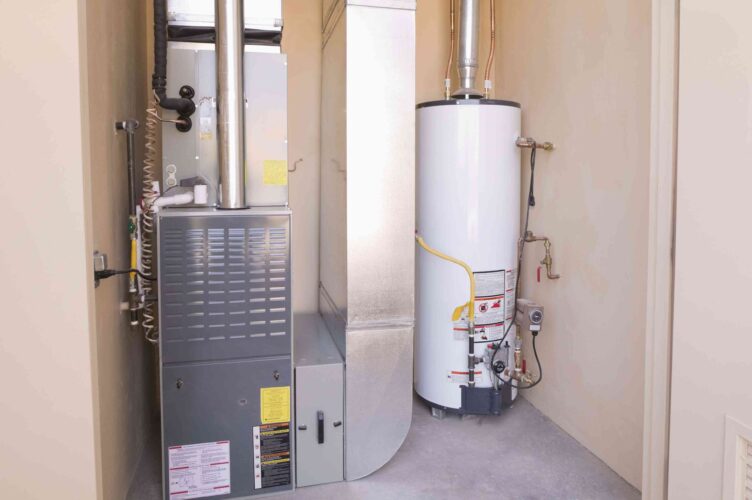Let's delve into a topic we all should understand: how do carbon monoxide detectors work? This little gadget is an unseen but vital safety device that guards us from an invisible threat. CO is often called the silent killer because it has no taste, smell, or color.
Understanding Carbon Monoxide
The first step to understanding detectors is to understand what they're protecting us from. Gases like oil, gas, wood, and coal don't fully burn, releasing carbon monoxide. This can occur in everyday appliances like furnaces, gas stoves, or vehicles. You can get CO poisoning if you breathe too much.
CO in the air can't be seen, smelled, or tasted. This makes it difficult to identify its presence without the help of technology. Hence, the role of a CO detector is significant.
Diving Deeper: How Detectors Detect

The Biomimetic Sensor: Copying Nature's Code
Think of a biomimetic sensor as a tiny chameleon sitting inside the carbon monoxide detector. Instead of a creature, though, it's a synthetic gel. It has a special property – it changes color when carbon monoxide gas comes into contact with it. You could say it gets a little ‘sick' from the CO gas, turning from one color to another. This shift is a red alert for the detector.
How does the device know the gel's color has changed? There is a light source and a light sensor inside the detector. The light source shines onto the gel, and the sensor picks up the light that bounces back. If CO has altered the gel's color, the reflected light changes, and the sensor can tell. It's like your eyes noticing a red apple turning green – you'd know something's up! This alerts the detector, causing it to sound the alarm. Neat, right?
Metal Oxide Semiconductor: Heating Up the Task
A metal oxide semiconductor, or MOS for short, works a bit differently. Picture a tiny piece of silica – a material similar to sand – shaped like a computer chip. This chip can conduct electricity but needs a little heat to get started. Just like you might run faster in a game after a good warm-up.
But, when carbon monoxide enters the scene, things get interesting. The CO gas messes with the warm chip, making it resist electricity instead. It's like trying to run through mud – much harder than running on a smooth track. The detector notices this change and rings the alarm, warning us of the CO in the air.
Electrochemical Sensor: An Electric Response
The electrochemical sensor is like a science experiment inside your detector. It's filled with a chemical solution and has two electrodes (like the positive and negative ends of a battery) dipped into it.
Imagine you're at a pool party. It's calm when no one's in the pool, but when people start jumping in, the water gets all splashy and exciting. Similarly, when carbon monoxide gas ‘jumps' into the chemical pool inside the detector, it stirs things up. It causes a reaction that creates an electrical current – like a wave in our pool party.
This electrical wave doesn't go unnoticed. It triggers the alarm, warning us that there's carbon monoxide around.
As you can see, whether it's changing color like a chameleon, running on a heated track, or creating waves at a pool party, your CO detector uses clever tricks to keep you safe from this silent gas. And now, you know how these handy devices are always on guard!
The Importance of Placement
A carbon monoxide detector can't protect you if it's in the wrong place. It's like having a guard dog that's locked away in a distant room. It's crucial to position these silent sentinels where they can best watch over you. Let's delve deeper into the prime locations:
By Your Dreamland: Near Sleeping Areas
Imagine trying to notice a whispered warning while you're in dreamland – not easy, right? Our bodies are at rest when we're asleep, and our senses are turned down low. One of the main symptoms of CO poisoning is drowsiness or confusion, which could be easily Drowsiness or confusion are two of the main signs of CO poisoning while sleeping.
So, to keep an eye out while you're catching your Z's, install detectors near all bedroom areas. If carbon monoxide levels rise, the alarm can rouse you from your slumber.
Overseeing Every Level: Detectors on Each Floor
Your house is like a multi-layered cake, and you need protection on each and every layer, including the basement. Whether you're chilling on the top floor or doing laundry in the basement, you need a CO detector watching over you. You'll hear the alarm no matter where you are in your house.
On High Alert: Near Fuel-Burning Appliances

Carbon monoxide is sneaky. It comes from the incomplete burning of various fuels. Appliances like your furnace, stove, or fireplace can produce this gas if they're not functioning properly. It's smart to place detectors near these potential sources, like a detective keeping an eye on a suspicious character. This gives the detector a better chance of picking up CO before it spreads too far.
Proper placement of CO detectors is an art and a science, making the difference between being alerted early or too late. Check out our full article on the best practices for CO detector placement. Take advantage of this knowledge and keep yourself and your family safe.
Maintenance is Key
Equally important as placement is the regular maintenance of these devices. Just like a car, a CO detector requires regular check-ups:
- Test monthly: Ensure your detector is in good working order by testing it monthly.
- Replace batteries yearly: You don't want your detector to fail due to a simple lack of power. Make sure to replace the batteries once a year.
- Change detector every 5-7 years: CO detectors don't last forever. Their lifespan is typically 5-7 years, after which they should be replaced.
Wrap Up
Knowledge is our strongest defense against threats we can't see. Therefore, understanding how carbon monoxide detectors work is valuable information for everyone.
These devices are our silent protectors, vigilantly guarding against a potentially fatal, yet invisible, foe. There are many different technologies out there, so it's important to know where to put them and how to maintain them. technologies available, knowing where to place them and how to maintain them is crucial.
Ultimately, a well-placed, well-maintained CO detector could be a literal lifesaver. Don't underestimate their importance. Stay safe, stay protected, and always stay informed.

